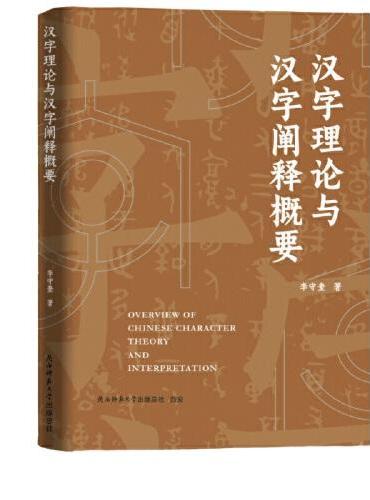新書推薦:

《
药食同源中药鉴别图典
》
售價:NT$
305.0

《
设计中的比例密码:建筑与室内设计
》
售價:NT$
398.0

《
冯友兰和青年谈心系列:看似平淡的坚持
》
售價:NT$
254.0

《
舍不得星星:全2册
》
售價:NT$
356.0

《
汉字理论与汉字阐释概要 《说解汉字一百五十讲》作者李守奎新作
》
售價:NT$
347.0

《
汗青堂丛书144·决战地中海
》
售價:NT$
765.0

《
逝去的武林(十周年纪念版 武学宗师 口述亲历 李仲轩亲历一九三零年代武人言行录)
》
售價:NT$
250.0

《
唐代冠服图志(百余幅手绘插画 图解唐代各类冠服 涵盖帝后 群臣 女官 士庶 军卫等 展现唐代社会风貌)
》
售價:NT$
398.0
|
| 內容簡介: |
本报告是《东亚能源互联网研究与展望》的英文版。
本报告是亚洲能源互联网研究系列成果之一,深度剖析了各国资源条件、经济社会以及能源电力现状与发展趋势,提出了清洁能源基地与区域能源互联网建设方案,评估能源互联网投资规模。内容共分7章:第1章介绍东亚经济社会和能源电力发展现状,分析东亚实现可持续发展和能源转型具有的优势和面临的挑战,提出能源互联网发展思路。第2章展望东亚能源电力转型发展趋势,综合考虑资源、人口、经济、产业、技术、气候和环境等因素,提出能源电力预测情景,能源供应向清洁主导方向发展,消费向电为中心方向发展,清洁能源装机规模快速提升,电力供应向清洁化和多元化方向发展。第3章综合风、光、降水等气候数据以及地理信息、地物覆盖等数据,研究东亚清洁能源资源分布和大型发电基地布局。第4章根据清洁能源资源禀赋和空间分布,以及各国家的特点与定位,分析区域电力流向,研究提出电网互联总体格局和互联方案。第5章评估构建东亚能源互联网带来经济、社会、环境等综合效益。第6章展望实现全球1.5摄氏度温控目标的东亚能源电力清洁发展路径与情景方案。第7章提出东亚能源互联网建设的相关政策建议。
|
| 關於作者: |
|
全球能源互联网发展合作组织(简称合作组织),是由致力于推动世界能源可持续发展的相关企业、组织、机构和个人等自愿组成的国际组织。注册地设在北京。合作组织的宗旨是推动构建全球能源互联网,以清洁和绿色方式满足全球电力需求,推动实现联合国“人人享有可持续能源”和应对气候变化目标,服务人类社会可持续发展。合作组织将积极推广全球能源互联网理念,组织制定全球能源互联网发展规划,建立技术标准体系,开展联合技术创新、重大问题研究和国际交流合作,推动工程项目实施,提供咨询服务,引领全球能源互联网发展。?
|
| 目錄:
|
Contents
Preface
Study Region
Summary
1?Development in East Asia / 01
1.1?Economy and Society / 02
1.1.1?Macro Economy / 02
1.1.2?Humanity and Society / 03
1.1.3?Regional Cooperation / 04
1.1.4?Development Policy / 05
1.2?Energy and Power / 06
1.2.1?Energy Development / 06
1.2.2?Power Development / 10
1.3?Sustainable Development Ideas / 13
1.3.1?Development Concept of Global Energy Interconnection / 13
1.3.2?East Asia Energy Interconnection Promotes Sustainable Development in the Region / 14
2?Energy and Power Development Trend and Outlook / 17
2.1?Energy Demand / 18
2.1.1?Primary Energy / 18
2.1.2?Final Energy / 20
2.2?Power Demand / 23
2.2.1?Drivers of Power Demand Growth / 23
2.2.2?Power Demand Outlook / 28
2.3?Power Supply / 30
3?Development Layout of Clean Energy Resources / 39
3.1?Distribution of Clean Energy Resources / 40
3.1.1?Hydro Energy / 40
3.1.2?Wind Energy / 41
3.1.3?Solar Energy / 41
3.2?Layout of Clean Energy Bases / 43
3.2.1?Hydropower Bases / 43
3.2.2?Wind Power Bases / 44
3.2.3?Solar Power Bases / 46
4?Power Grid Interconnection / 49
4.1?Power Flow / 50
4.1.1?Balance of Supply and Demand / 51
4.1.2?Power Flow Scheme / 51
4.2?Grid Interconnection / 53
4.2.1?Overall pattern / 53
4.2.2?Interconnection Scheme / 56
4.3?Key Interconnection Projects / 59
4.3.1?Key Inter-Regional Projects / 59
4.3.2?Key Cross-border Projects / 62
4.4?Investment Estimation / 65
4.4.1?Investment Estimation Principle / 65
4.4.2?Investment Estimation Results / 67
5?Comprehensive Benefits / 69
5.1?Economic Benefits / 70
5.2?Social Benefits / 70
5.3?Environmental Benefits / 71
5.4?Political Benefits / 73
6?Development Outlook of Achieving the 1.5℃ Temperature Control Target / 75
6.1?Implementation Paths / 76
6.1.1?Clean Replacement / 76
6.1.2?Electricity Replacement / 77
6.1.3?Carbon Sequestration and Reduction / 77
6.2?Scenarios and Schemes / 78
6.2.1?Energy Demand / 78
6.2.2?Power Demand / 80
6.2.3?Power Supply / 81
6.2.4?Power Grid Interconnection / 83
6.2.5?Comparative Analysis/ 84
7?Policy and Mechanism / 85
References / 88
|
|










